-
 Bitcoin
Bitcoin $109,583.2239
0.19% -
 Ethereum
Ethereum $2,583.4612
0.48% -
 Tether USDt
Tether USDt $1.0003
-0.04% -
 XRP
XRP $2.2681
0.70% -
 BNB
BNB $659.9218
-0.52% -
 Solana
Solana $151.4961
-0.37% -
 USDC
USDC $0.9999
-0.02% -
 TRON
TRON $0.2861
1.20% -
 Dogecoin
Dogecoin $0.1718
0.04% -
 Cardano
Cardano $0.5960
-0.07% -
 Hyperliquid
Hyperliquid $40.1233
2.85% -
 Sui
Sui $2.9974
2.48% -
 Bitcoin Cash
Bitcoin Cash $497.1279
-1.76% -
 Chainlink
Chainlink $13.7275
-0.22% -
 UNUS SED LEO
UNUS SED LEO $9.0241
0.70% -
 Avalanche
Avalanche $18.5536
-0.88% -
 Stellar
Stellar $0.2421
1.39% -
 Toncoin
Toncoin $2.8593
-0.51% -
 Shiba Inu
Shiba Inu $0.0...01187
-0.07% -
 Litecoin
Litecoin $90.0023
2.90% -
 Hedera
Hedera $0.1590
2.79% -
 Monero
Monero $322.1495
0.00% -
 Polkadot
Polkadot $3.5453
-1.00% -
 Dai
Dai $1.0000
-0.01% -
 Bitget Token
Bitget Token $4.5733
-1.06% -
 Ethena USDe
Ethena USDe $1.0002
-0.01% -
 Uniswap
Uniswap $7.6345
3.03% -
 Aave
Aave $279.2583
0.47% -
 Pepe
Pepe $0.0...01003
-1.52% -
 Pi
Pi $0.4941
-0.32%
How does mining verify blockchain transactions?
Miners solve complex cryptographic puzzles to verify and add transaction blocks to the blockchain, securing the network and preventing double-spending; rewards incentivize participation, varying by consensus mechanism (PoW vs. PoS).
Mar 01, 2025 at 04:54 am
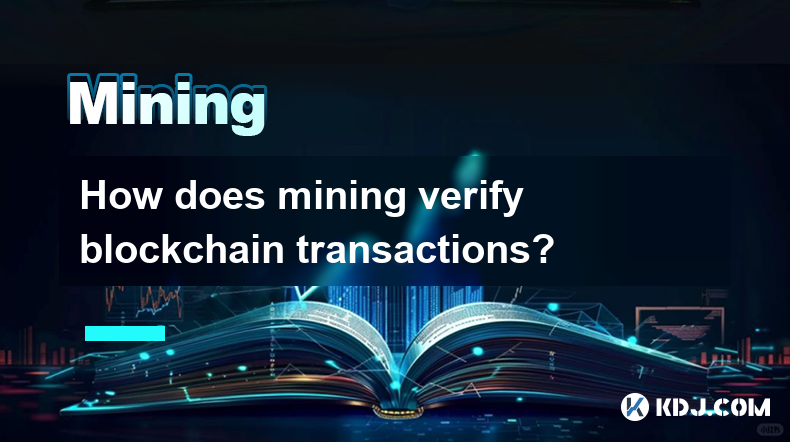
Key Points:
- Mining involves solving complex cryptographic puzzles to validate and add new blocks of transactions to the blockchain.
- This process secures the network, prevents double-spending, and maintains the integrity of the blockchain's record.
- Different consensus mechanisms, like Proof-of-Work (PoW) and Proof-of-Stake (PoS), employ varying approaches to mining and transaction verification.
- The complexity of the puzzles ensures that the process is computationally expensive, discouraging malicious actors from altering the blockchain.
- Successful miners are rewarded with newly minted cryptocurrency, incentivizing participation in the network's security.
How Does Mining Verify Blockchain Transactions?
Blockchain technology relies on a distributed ledger system, meaning transaction records are replicated across numerous computers (nodes) within the network. To ensure the integrity and immutability of this ledger, a process called mining is employed. Mining, at its core, is the process of verifying and adding new transactions to the blockchain. This isn't done by a central authority; instead, it's a decentralized, competitive process.
The process begins with a collection of pending transactions. These transactions, once broadcast to the network, are gathered into a block. This block contains a cryptographic hash of the previous block, creating a chain. This linkage is what gives the blockchain its name and its security. Miners then compete to solve a complex computational puzzle associated with this block.
This puzzle typically involves finding a specific number (nonce) that, when combined with the block's data and hashed, results in a hash that meets certain criteria. The criteria usually involve the hash starting with a specific number of zeros, making it incredibly difficult to find the correct nonce. The difficulty of the puzzle is dynamically adjusted by the network to maintain a consistent block creation rate.
The first miner to solve the puzzle and produce a valid hash “wins” and adds their solved block to the blockchain. This solved block, containing the verified transactions, is then broadcast to the network, where other nodes verify its validity. Once verified by a majority of nodes, the block is permanently added to the blockchain, confirming the transactions within it.
This process, particularly in Proof-of-Work (PoW) systems like Bitcoin, consumes significant computational resources. The energy expenditure is a controversial aspect of PoW, but it's a critical part of the system's security. The computational cost acts as a deterrent against malicious actors attempting to manipulate the blockchain by creating fraudulent blocks.
Proof-of-Stake (PoS) systems offer a more energy-efficient alternative. In PoS, miners (often called validators) are selected to create new blocks based on the amount of cryptocurrency they "stake" (lock up) in the network. The selection process is probabilistic, rewarding those who have staked more cryptocurrency with a higher chance of being selected. Transaction verification in PoS still relies on consensus among validators, but it avoids the computationally intensive puzzle-solving of PoW.
Regardless of the specific consensus mechanism, the core principle remains the same: mining ensures the verification and secure addition of transactions to the blockchain. The process inherently combats double-spending – the attempt to spend the same cryptocurrency twice – because once a transaction is included in a validated block, it cannot be reversed or altered.
Different Consensus Mechanisms and Their Impact on Mining and Verification:
The method of mining and verification varies depending on the blockchain's consensus mechanism. We've discussed PoW and PoS, but other mechanisms exist, each with its unique approach to transaction validation. The choice of consensus mechanism profoundly impacts the network's security, scalability, and energy consumption.
- Proof-of-Work (PoW): This mechanism, used by Bitcoin and many other cryptocurrencies, relies on miners competing to solve computationally intensive cryptographic puzzles. The winner adds the block to the chain and receives a reward. This ensures security through the energy expenditure required for mining.
- Proof-of-Stake (PoS): This mechanism, employed by Ethereum (post-Merge) and other blockchains, selects validators based on the amount of cryptocurrency they stake. It’s generally considered more energy-efficient than PoW. Validators are rewarded for correctly validating transactions and penalized for malicious behavior.
- Delegated Proof-of-Stake (DPoS): This mechanism allows token holders to vote for delegates who will validate transactions. It aims to improve efficiency and scalability by reducing the number of validators needed.
The Role of Hashing in Transaction Verification:
Hashing is a fundamental aspect of blockchain technology and plays a crucial role in transaction verification. A cryptographic hash function takes an input (in this case, the block's data) and produces a unique, fixed-size output (the hash). Even a tiny change in the input will drastically alter the output hash.
This property makes hashing ideal for ensuring data integrity. If a malicious actor tries to alter a transaction in a block, the resulting hash will be completely different, instantly revealing the tampering. The hash of the previous block is also included in each new block, forming the chain and making it incredibly difficult to alter past transactions without affecting subsequent blocks.
This intricate process ensures that the blockchain maintains its immutability, a cornerstone of its security and reliability.
Frequently Asked Questions:
Q: What is the reward for successful mining?
A: The reward for successful mining varies depending on the cryptocurrency. It usually involves newly minted coins and transaction fees included in the block. The reward gradually decreases over time, often according to a pre-defined schedule.
Q: How much energy does mining consume?
A: The energy consumption of mining depends heavily on the consensus mechanism (PoW consumes significantly more energy than PoS). The specific hardware used, network difficulty, and cryptocurrency's algorithm also contribute to the overall energy usage.
Q: Can anyone mine cryptocurrency?
A: Technically, yes, anyone can mine cryptocurrency. However, the profitability of mining depends on various factors, including the cost of hardware, electricity, and the cryptocurrency's price. For many cryptocurrencies, specialized mining hardware is required, making it a substantial investment.
Q: Is mining profitable?
A: The profitability of mining is highly variable and depends on several factors. These include the cryptocurrency's price, mining difficulty, electricity costs, and the cost of mining hardware. What may be profitable in one circumstance may not be in another.
Q: What are the risks associated with mining?
A: Risks associated with mining include the high initial investment in hardware, fluctuating cryptocurrency prices, potential hardware failures, and the possibility of becoming unprofitable due to increased network difficulty or decreased cryptocurrency value. Also, the environmental impact of energy consumption, especially with PoW, is a growing concern.
Disclaimer:info@kdj.com
The information provided is not trading advice. kdj.com does not assume any responsibility for any investments made based on the information provided in this article. Cryptocurrencies are highly volatile and it is highly recommended that you invest with caution after thorough research!
If you believe that the content used on this website infringes your copyright, please contact us immediately (info@kdj.com) and we will delete it promptly.
- House, Trump Bill, Bitcoin Rally: A New York Minute on Macro and Crypto
- 2025-07-04 10:30:12
- Coin Master Free Spins: Your Daily Dose of Links (July 2025)
- 2025-07-04 10:50:12
- Crypto's Dual Lifeline: Bitcoin ETFs Soar as Stablecoins Bolster US Treasuries
- 2025-07-04 10:30:12
- Altcoins in July 2025: Market Momentum and Top Picks
- 2025-07-04 11:10:12
- Qubetics Price Prediction: Analysts See $10-$15 in 2026 - Is It Just Hype?
- 2025-07-04 10:35:12
- LILPEPE: The Meme Coin Primed for Explosive Growth with Blockchain Tech
- 2025-07-04 08:50:13
Related knowledge
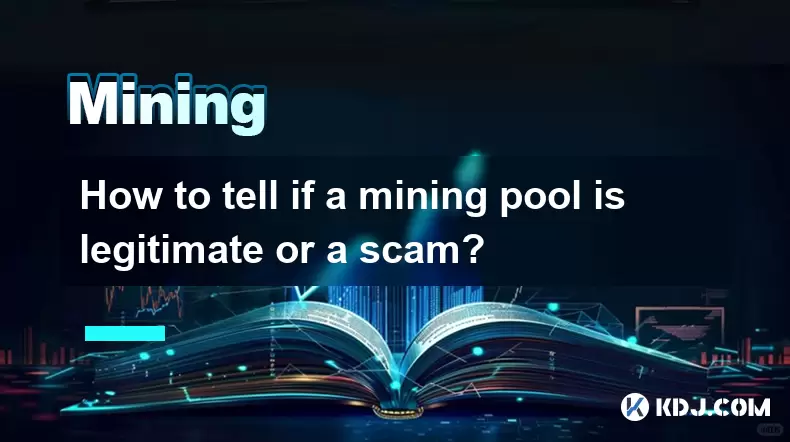
How to tell if a mining pool is legitimate or a scam?
Jul 03,2025 at 12:35pm
Understanding the Role of Mining PoolsMining pools play a crucial role in cryptocurrency mining by allowing individual miners to combine their computational resources and increase the likelihood of earning block rewards. A legitimate mining pool distributes rewards fairly, maintains transparency in operations, and has a strong community presence. Howeve...
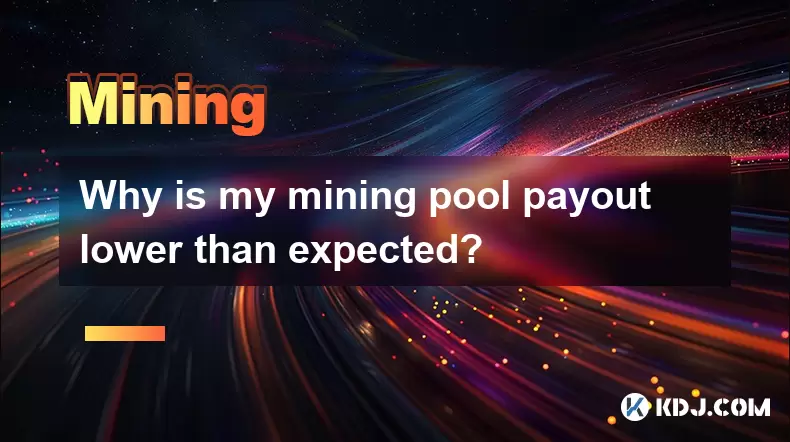
Why is my mining pool payout lower than expected?
Jul 03,2025 at 02:21am
Understanding Mining Pool Payout StructuresWhen you join a mining pool, it's important to understand the specific payout structure that the pool uses. Different pools operate under different reward systems, such as Pay Per Share (PPS), Proportional, Score-based, or Pay Per Last N Shares (PPLNS). Each method affects how and when miners receive their rewa...
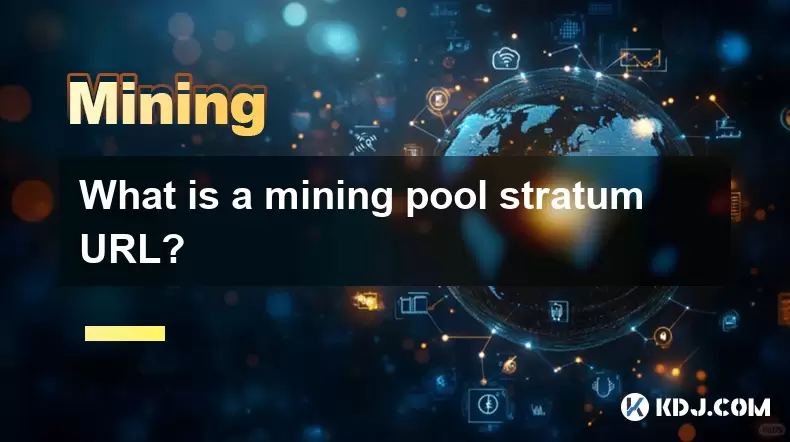
What is a mining pool stratum URL?
Jul 03,2025 at 03:42pm
Understanding the Basics of Mining PoolsIn the world of cryptocurrency mining, a mining pool is a collective group of miners who combine their computational resources to increase the probability of successfully mining a block. Instead of mining individually, which can be inefficient and sporadic in terms of rewards, joining a mining pool allows particip...
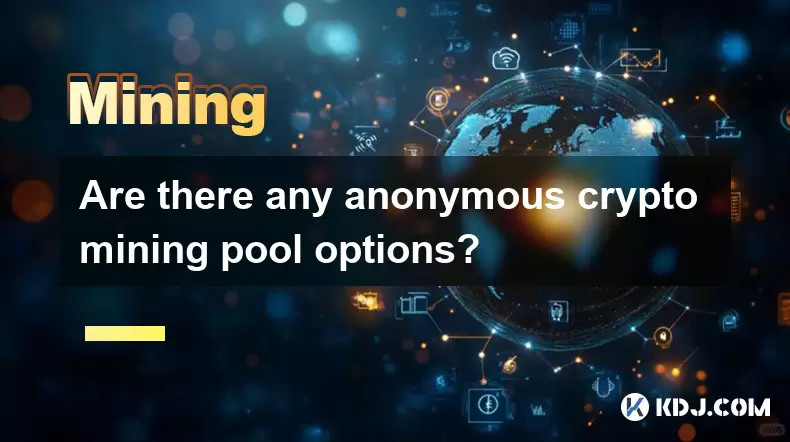
Are there any anonymous crypto mining pool options?
Jul 03,2025 at 03:14am
What is a Crypto Mining Pool?A crypto mining pool refers to a group of miners who combine their computational resources to increase the probability of successfully mining a block. By pooling together, participants share the rewards proportionally based on contributed hashing power. This method offers more consistent payouts compared to solo mining, whic...
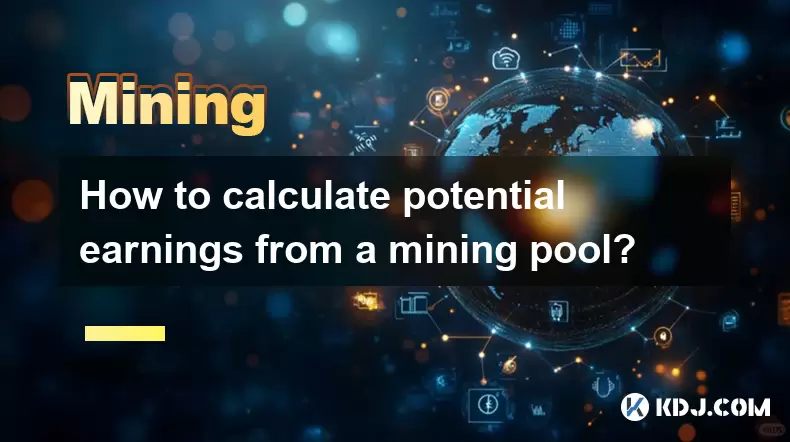
How to calculate potential earnings from a mining pool?
Jul 03,2025 at 06:56am
Understanding Mining Pool EarningsTo calculate potential earnings from a mining pool, it's essential to understand the mechanics behind how mining pools operate. A mining pool is a group of miners who combine their computational resources to increase the probability of solving a block and earning rewards. The reward is then distributed among participant...
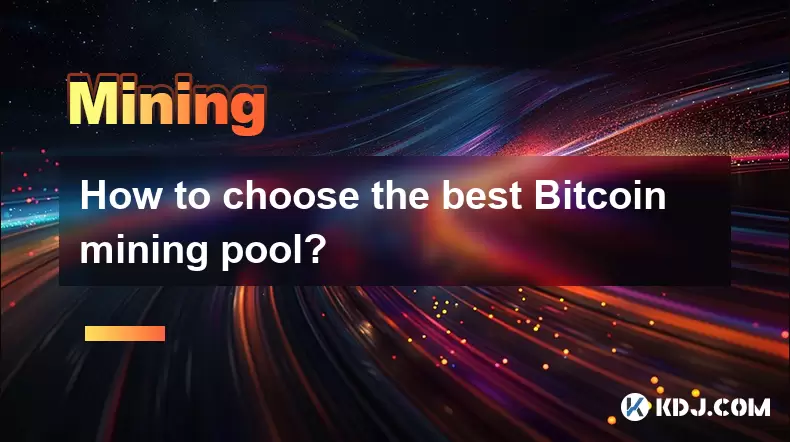
How to choose the best Bitcoin mining pool?
Jul 03,2025 at 05:07pm
What is a Bitcoin Mining Pool?A Bitcoin mining pool is a group of miners who combine their computational resources to increase the probability of successfully mining a block. By pooling resources, individual miners can receive more consistent rewards based on their contributed hash power. When a block is mined, the reward is distributed among participan...

How to tell if a mining pool is legitimate or a scam?
Jul 03,2025 at 12:35pm
Understanding the Role of Mining PoolsMining pools play a crucial role in cryptocurrency mining by allowing individual miners to combine their computational resources and increase the likelihood of earning block rewards. A legitimate mining pool distributes rewards fairly, maintains transparency in operations, and has a strong community presence. Howeve...

Why is my mining pool payout lower than expected?
Jul 03,2025 at 02:21am
Understanding Mining Pool Payout StructuresWhen you join a mining pool, it's important to understand the specific payout structure that the pool uses. Different pools operate under different reward systems, such as Pay Per Share (PPS), Proportional, Score-based, or Pay Per Last N Shares (PPLNS). Each method affects how and when miners receive their rewa...

What is a mining pool stratum URL?
Jul 03,2025 at 03:42pm
Understanding the Basics of Mining PoolsIn the world of cryptocurrency mining, a mining pool is a collective group of miners who combine their computational resources to increase the probability of successfully mining a block. Instead of mining individually, which can be inefficient and sporadic in terms of rewards, joining a mining pool allows particip...

Are there any anonymous crypto mining pool options?
Jul 03,2025 at 03:14am
What is a Crypto Mining Pool?A crypto mining pool refers to a group of miners who combine their computational resources to increase the probability of successfully mining a block. By pooling together, participants share the rewards proportionally based on contributed hashing power. This method offers more consistent payouts compared to solo mining, whic...

How to calculate potential earnings from a mining pool?
Jul 03,2025 at 06:56am
Understanding Mining Pool EarningsTo calculate potential earnings from a mining pool, it's essential to understand the mechanics behind how mining pools operate. A mining pool is a group of miners who combine their computational resources to increase the probability of solving a block and earning rewards. The reward is then distributed among participant...

How to choose the best Bitcoin mining pool?
Jul 03,2025 at 05:07pm
What is a Bitcoin Mining Pool?A Bitcoin mining pool is a group of miners who combine their computational resources to increase the probability of successfully mining a block. By pooling resources, individual miners can receive more consistent rewards based on their contributed hash power. When a block is mined, the reward is distributed among participan...
See all articles

























































































